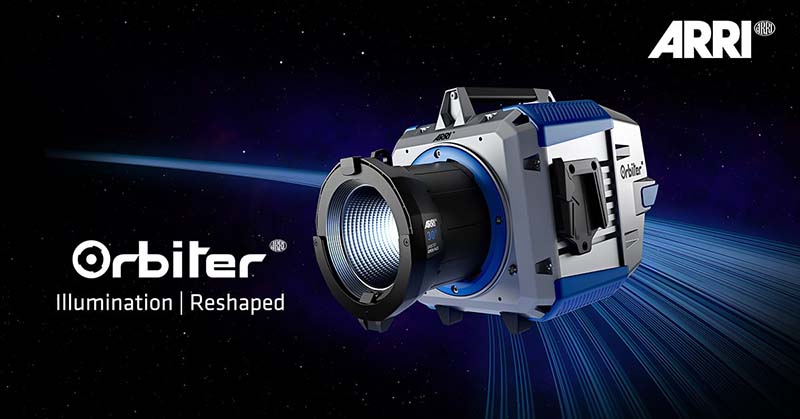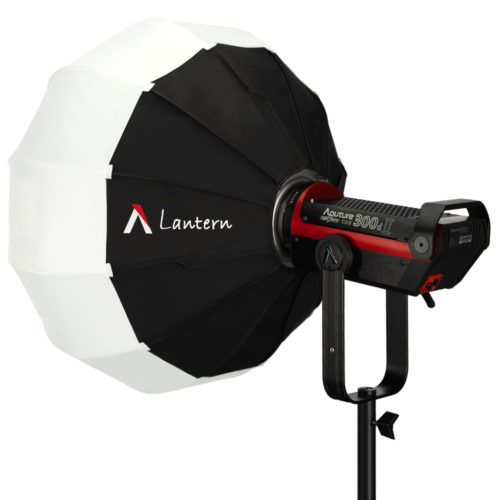Brought to you by lead tech, Noah Nelson
When I think of gear that has changed the industry, the first thing that comes to mind is LED lighting. There are many benefits to having an LED light: its portable, pulls less power, and the fixture itself doesn’t tend to get hot. Most importantly, it’s opened the field to bi-color and RBG lights. One of the companies that has perfected the LED light is Arri. In 2015 they released a series of lights called Skypanels that have been on countless Hollywood and independent sets. And soon Arri will be releasing another light — the Orbiter — that has the potential to be another industry game-changer.

Let’s go through some of the features Arri has released about their new light:
- This will be a directional (hard light), whereas the Skypanel is a soft light
- It has 8 Color modes:
- CCT (correlated color temperature) range from 2,000 – 20,000 kelvin
- HSI “HUE Saturation Intensity” (color wheel) — *can’t change kelvin
- RGBACL – red, green, blue, amber, cyan and lime — *can change kelvin
- Lee and Rosco gel selection
- X,Y coordinates
- Effects (similar to the Skypanel)
- Source matching – will use a sensor on the fixture to measure ambient light and recreate it
- Favorites – you can keep presets for the colors/effects used on your shoot
- The control panel on the back of the fixture is removable, eliminating need for an additional remote
- Weatherproof housing
- Changeable mounts including:
- open face optics with 15°, 30°, and 60° beam angles
- projection optic (Leko) with 15°, 25°, 35° beam angles
- Dome optics ranging from small, medium and large
- light bank adapter allowing companies like Chimera to make attachments
- open face optics with 15°, 30°, and 60° beam angles
All those impressive features are surprisingly built into one lighting fixture — and that’s why we already have a model on pre-order. We’re very excited to get the Orbiter in our shop and into your hands. But what else could pair well with a light that can do it all?
In most situations you can’t get away with just one light on set. We recommend using the Orbiter’s friend-in-kind, the Aputure 120d Mk II and 300d Mk II — both lights having surprisingly similar qualities to the Orbiter.

The features of the Aputure lights include:
- Directional (Hard Light)
- Effects
- Changeable mounts
- Fresnel 2x
- Open face reflector
- Spotlight (Leko) 19°, 26°, 36°
- Light dome (Small and Large)
- Lantern softbox (China ball)
The main difference between Arri and Aputure is the Aputure lights are fixed at 5600k. If you needed to change the color temperature or want a specific color, you would have to go the traditional route and use a gel. On the upside, this Aputure is small enough to use as a fill or back light, while the Orbiter works as your key light.
Versatility in filmmaking is important all around, but it’s especially important when it comes to gear. Productions tend to order a number of different lights for different scenarios, but when you have two lights that can seemingly do it all, what more could you ask for?
